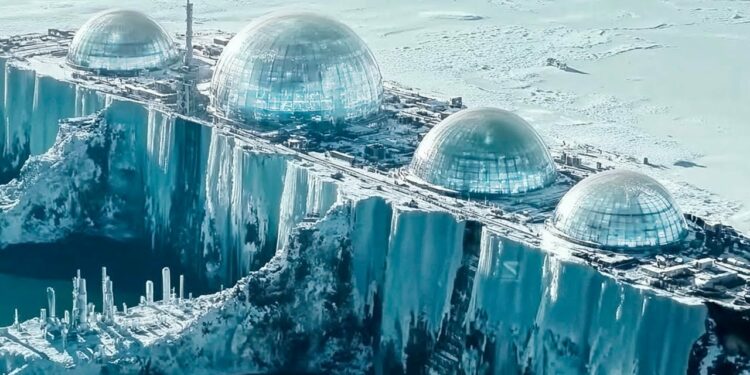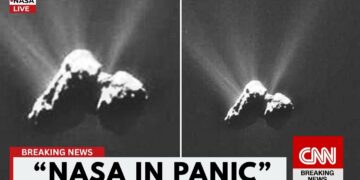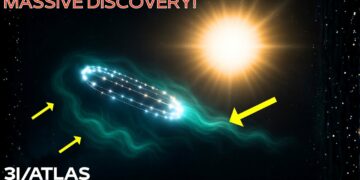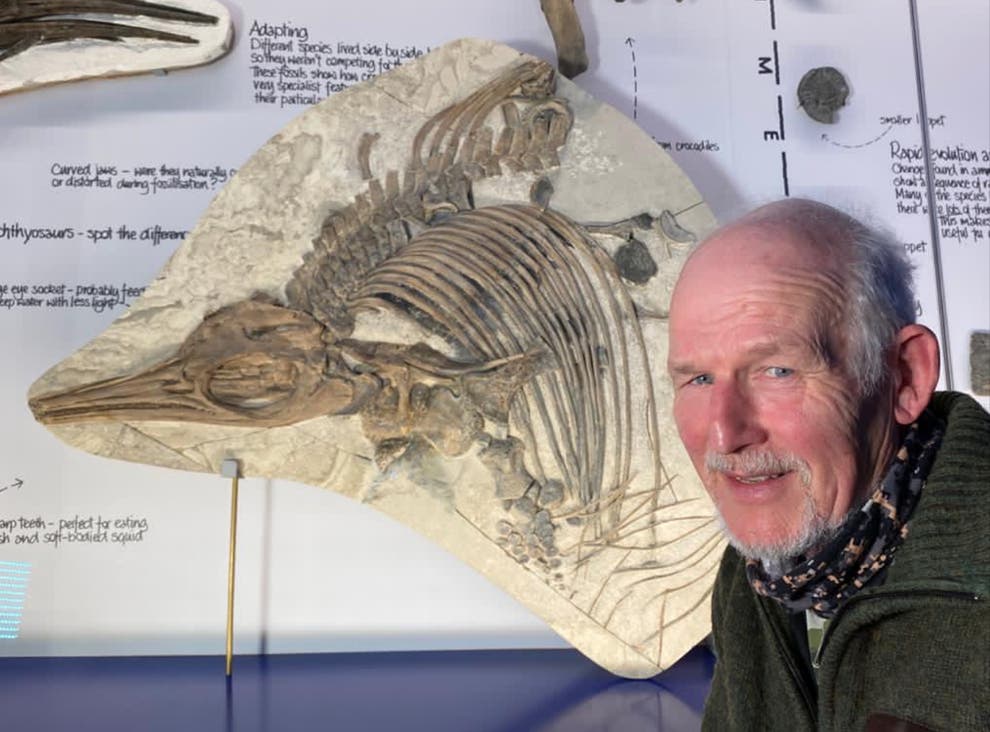Antarctica, the icy frontier at the southern tip of our planet, is a land of mystery and intrigue. Its vast frozen landscapes and extreme climate have given rise to strange theories and legends. From claims of a hidden city—possibly the fabled Atlantis—beneath its ice to sightings of terrifying creatures, Antarctica is a continent full of enigma. Here, we explore some of the most fascinating and chilling stories about the coldest region on Earth.
-
The Enigmatic City of Atlantis Compelling theories suggest a mysterious city may lie beneath Antarctica’s ice, potentially the legendary lost city of Atlantis. This ice-covered land, now home to scientists and penguins, may have once hosted an advanced civilization. The crust displacement theory proposes that around 12,000 years ago, shifts in Earth’s crust left parts of Antarctica ice-free, possibly allowing ancient peoples to inhabit the region. This aligns with Plato’s description of Atlantis as a city founded by divine and human beings. After the last Ice Age, the continent became ice-covered, potentially wiping out this prehistoric culture. Some point to the 1530 Piri Reis map, which allegedly depicts Antarctica’s coastline before its discovery, while NASA satellite images have reportedly detected evidence of human settlements beneath the ice, though these claims remain controversial.
-
The Fearsome Wolverine Wolverines, ferocious beasts of the northern wilderness, embody survival in harsh conditions. Found in Arctic regions, these muscular animals with dagger-like claws and powerful jaws are often compared to dog-sized weasels. Capable of confronting prey ten times their size, wolverines showcase remarkable courage. Their thick fur and stout bodies make them well-suited for frigid climates. Despite their fierce reputation, wolverines can be playful and inquisitive, earning them a place as one of nature’s most formidable Arctic creatures.
-
The Mysterious Depths of Antarctica While the Mariana Trench is the deepest point on Earth, researchers recently discovered Antarctica’s deepest mainland point beneath the Denman Glacier in the eastern region. This glacier, spanning 12.4 miles wide and descending 2 miles below sea level, contains an unusual ice-filled opening. Despite efforts to explore it, radar has failed to reveal what lies beneath, leaving the site a mystery. The Denman Glacier holds critical data about rising sea levels, making its secrets all the more tantalizing.
-
The Endurance Ship’s Remarkable Rediscovery The Endurance, a ship lost in 1915 after being crushed by sea ice during Sir Ernest Shackleton’s Antarctic expedition, was recently found at the bottom of the Weddell Sea. Remarkably well-preserved, the ship offers a glimpse into maritime history and the challenges faced by early explorers in Antarctica’s harsh environment.
-
Scott’s Hut and Its Historical Significance Located on Cape Evans’ northern shore on Ross Island, Scott’s Hut is a historic structure from the 1910–1913 Terra Nova Expedition. Built in just nine days, it served as a base for 25 team members. Tragically, Scott and his companions perished returning from the South Pole, just 162 miles from their base. Their bodies were found with fossils, including those of the glossopteris tree, proving Antarctica was once lush and forested, highlighting the bravery and harsh realities of early exploration.
-
The Discovery of Monstracopsis Planifrons A remarkable species, Monstracopsis planifrons, was discovered by a University of Manitoba student beneath Antarctic ice. With eight brush-like legs and a nearly transparent appearance, this creature paddles gracefully through frigid waters. Its discovery challenges our understanding of life in extreme environments and underscores how much remains unknown about Antarctica’s ecosystems.
-
Evidence of a Rainforest Beneath the Ice Antarctica, often seen as a desolate wasteland, revealed remnants of a rainforest near Pine Island Glacier. Ancient roots, pollen, and other signs indicate a warmer climate 90 million years ago, with average temperatures exceeding 53.6°F and summer highs reaching 64.4°F. This suggests Antarctica was once a vibrant, dinosaur-era rainforest, challenging our view of Earth’s climatic history.
-
William Moore and His Antarctic Discoveries Geomorphologist William Moore’s book, The Navigator Who Crossed the Ice Walls: Worlds Beyond the Antarctic, describes a researcher’s journey beyond Antarctica’s ice walls, allegedly encountering a different civilization. While speculative, it raises intriguing questions about what might lie hidden beneath the ice.
-
The Mysterious Rectangular Iceberg In 2018, researchers discovered a perfectly rectangular iceberg near the Larsen C ice shelf, with smooth surfaces and sharp 90° angles. Its unusual geometry sparked speculation about supernatural forces or extraordinary origins, adding to Antarctica’s mystique.
-
The A-76 Ice Shelf Break In May 2021, the Ronne Ice Shelf calved a massive iceberg, A-76, measuring 105.5 miles long and 15.5 miles wide. Its journey raises questions about climate change’s impact on Antarctic ice shelves and their contribution to rising sea levels.
-
The Discovery of Organism 46B Russian scientists found a mysterious creature, Organism 46B, in Lake Vostok, a subglacial lake. Resembling a giant squid with 14 tentacles and measuring 33 feet long, it may release toxins. This find raises questions about life’s adaptability in extreme conditions.
-
The Enigmatic Fossil Discovery In 2011, a fossil resembling a dented soccer ball was identified as a 66-million-year-old giant soft-shelled egg, the largest ever found. Likely laid by an extinct lizard or snake, it highlights the diversity of prehistoric life in Antarctica.
-
The Mysterious Alien Structure A 2012 satellite image revealed an oval, compound-like structure in Antarctica, fueling theories of extraterrestrial origins. Its enigmatic design deepens the continent’s mystery.
-
The Century-Old Fruit Cake A century-old fruit cake, likely brought by Robert Falcon Scott during the Terra Nova Expedition, was found in a historic hut at Cape Adare. Preserved by Antarctica’s frigid temperatures, it reflects the dietary needs of early explorers.
-
Peanut the Polar Bear Peanut, a polar bear rescued by filmmaker Karin Janest, formed a unique bond with her. Documented chasing drones in the snow, Peanut highlights the connection between humans and Arctic wildlife.
-
The Antarctic Blackfin Icefish A transparent Antarctic blackfin icefish, lacking red blood cells, was discovered by a film crew. Its unique adaptation raises questions about other translucent species in Earth’s depths.
-
The Discovery of Sponge Gardens Sponge gardens, thriving near extinct volcanoes in the deep Antarctic ocean, reveal life’s resilience in extreme environments and the beauty of Antarctica’s ecosystems.
-
The Mystery of Cryoconite Holes Cryoconite holes, cylindrical depressions in glaciers, form when dark debris absorbs sunlight, creating microhabitats for microbial life. These unique ecosystems highlight Antarctica’s complexity.
-
The Melting Doomsday Glacier The Thwaites Glacier, or Doomsday Glacier, is melting rapidly due to warm ocean water, threatening global sea levels. Its collapse could destabilize other ice sheets, with dire consequences.
-
The Mysterious Domes A drone survey captured images of massive, seemingly man-made domes encased in ice, sparking theories of secret facilities or ancient civilizations. The find demands further investigation.
-
The Lost Hammer Spring In Canada’s High Arctic, the Lost Hammer Spring hosts methane-metabolizing microbes, mirroring Martian conditions and suggesting life’s potential beyond Earth.
-
Mysterious Ice Tunnels Researchers report a network of ice tunnels beneath Antarctica, possibly human-made or linked to UFOs. Their origins remain unclear, fueling speculation.
-
The Antarctic Scale Worm The Antarctic scale worm, with its golden coat, thrives 1,640 feet deep in the Southern Ocean. Its bizarre appearance underscores the diversity of Antarctic life.
-
The Hidden River Beneath Antarctica A 286-mile-long river beneath the ice sheet collects meltwater, revealed by radar and hydrological models. Its presence could influence ice flow and melting rates.
-
The Strange Skulls of Antarctica In 2014, three unusual skulls sparked theories of extraterrestrial origins or ancient head elongation practices, raising questions about their presence in Antarctica.
-
The Meteorite from Mars The Allan Hills 84001 meteorite, found in 1984, contains possible microscopic fossils from Mars, fueling debate about life on the red planet.
-
Operation Sunshine In 1958, an American submarine reached the North Pole beneath Arctic ice, opening new scientific opportunities to study the region’s environment.
-
The Antarctic Pyramid Discovery Satellite images near the Shackleton Range reveal a pyramid-like structure, possibly the oldest known pyramid, fueling theories of alien or ancient origins.
-
Mummified Penguins Mummified penguins, some centuries old, offer insights into past climate changes and their impact on Antarctic wildlife.
-
Antarctica’s Meteorite Treasure Antarctica hosts nearly two-thirds of Earth’s meteorites, preserved by its cold, dry climate. A 2023 find weighing 18 pounds adds to scientific knowledge.
-
The Polar Fox Rescue Crab fishermen rescued a polar fox stranded on an iceberg, showcasing compassion in Antarctica’s harsh environment.
-
The Enigma of Base 211 Legends of a Nazi Base 211 in Antarctica, possibly in the Muhlig-Hofmann peaks, include tales of grassy fields and hot springs, though its existence remains unproven.
-
The Myth of Hyperborea Greek mythology’s Hyperborea, a land of eternal spring, may be linked to Antarctica, reflecting humanity’s fascination with lost civilizations.
-
The Mysterious Five-Legged Creatures In 2021, an anonymous user claimed their father, a Google Earth employee, saw spider-like creatures in Antarctica, leaving massive footprints and causing severe injuries. Polaroid images were allegedly suppressed, and a Cloverfield-like creature was reported, deepening the mystery.
Antarctica continues to captivate with its secrets. What other strange phenomena might lurk in its icy depths? Share your thoughts!
























